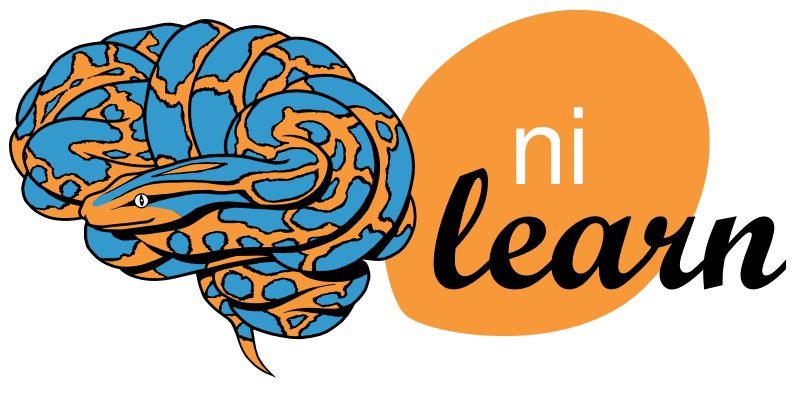Note
This page is a reference documentation. It only explains the function signature, and not how to use it. Please refer to the user guide for the big picture.
8.12.2. nilearn.signal.clean¶
- nilearn.signal.clean(signals, runs=None, detrend=True, standardize='zscore', sample_mask=None, confounds=None, standardize_confounds=True, filter='butterworth', low_pass=None, high_pass=None, t_r=2.5, ensure_finite=False)[source]¶
Improve SNR on masked fMRI signals.
This function can do several things on the input signals, in the following order:
detrend
low- and high-pass filter
remove confounds
standardize
Low-pass filtering improves specificity.
High-pass filtering should be kept small, to keep some sensitivity.
Filtering is only meaningful on evenly-sampled signals.
According to 1, removal of confounds will be done orthogonally to temporal filters (low- and/or high-pass filters), if both are specified.
- Parameters
- signals
numpy.ndarray Timeseries. Must have shape (instant number, features number). This array is not modified.
- runs
numpy.ndarray, optional Add a run level to the cleaning process. Each run will be cleaned independently. Must be a 1D array of n_samples elements. Default is None.
- confounds
numpy.ndarray,str,pandas.DataFrameorlistof Confounds timeseries. Shape must be (instant number, confound number), or just (instant number,) The number of time instants in
signalsandconfoundsmust be identical (i.e.signals.shape[0] == confounds.shape[0]). If a string is provided, it is assumed to be the name of a csv file containing signals as columns, with an optional one-line header. If a list is provided, all confounds are removed from the input signal, as if all were in the same array. Default is None.- sample_maskNone,
numpy.ndarray,list,tuple, orlistof shape: (number of scans - number of volumes removed, ) Masks the niimgs along time/fourth dimension to perform scrubbing (remove volumes with high motion) and/or non-steady-state volumes. This masking step is applied before signal cleaning. When supplying run information, sample_mask must be a list containing sets of indexes for each run.
New in version 0.8.0.
Default is None.
- t_r
floator None, optional Repetition time, in seconds (sampling period). Set to
Noneif not provided. Default=None. Default=2.5.- filter{‘butterworth’, ‘cosine’, False}, optional
Filtering methods:
‘butterworth’: perform butterworth filtering.
‘cosine’: generate discrete cosine transformation drift terms.
False: Do not perform filtering.
Default=’butterworth’.
- low_pass
floator None, optional Low cutoff frequency in Hertz. If specified, signals above this frequency will be filtered out. If None, no low-pass filtering will be performed. Default=None.
Note
low_pass is not implemented for filter=’cosine’.
- high_pass
float, optional High cutoff frequency in Hertz. If specified, signals below this frequency will be filtered out. Default=None.
- detrend
bool, optional Whether to detrend signals or not.
- standardize{‘zscore’, ‘psc’, False}, optional
Strategy to standardize the signal:
‘zscore’: The signal is z-scored. Timeseries are shifted to zero mean and scaled to unit variance.
‘psc’: Timeseries are shifted to zero mean value and scaled to percent signal change (as compared to original mean signal).
True: The signal is z-scored (same as option zscore). Timeseries are shifted to zero mean and scaled to unit variance.
False: Do not standardize the data.
Default=”zscore”.
- standardize_confounds
bool, optional If set to True, the confounds are z-scored: their mean is put to 0 and their variance to 1 in the time dimension. Default=True.
- ensure_finite
bool, optional If True, the non-finite values (NANs and infs) found in the data will be replaced by zeros. Default=False.
- signals
- Returns
- cleaned_signals
numpy.ndarray Input signals, cleaned. Same shape as signals.
- cleaned_signals
See also
Notes
Confounds removal is based on a projection on the orthogonal of the signal space. See 2.
Orthogonalization between temporal filters and confound removal is based on suggestions in 1.
References
- 1(1,2)
Martin A. Lindquist, Stephan Geuter, Tor D. Wager, and Brian S. Caffo. Modular preprocessing pipelines can reintroduce artifacts into fmri data. bioRxiv, 2018. URL: https://www.biorxiv.org/content/early/2018/09/04/407676, arXiv:https://www.biorxiv.org/content/early/2018/09/04/407676.full.pdf, doi:10.1101/407676.
- 2
K. J. Friston, A. P. Holmes, K. J. Worsley, J.-P. Poline, C. D. Frith, and R. S. J. Frackowiak. Statistical parametric maps in functional imaging: a general linear approach. Human Brain Mapping, 2(4):189–210, 1994. URL: https://onlinelibrary.wiley.com/doi/abs/10.1002/hbm.460020402, arXiv:https://onlinelibrary.wiley.com/doi/pdf/10.1002/hbm.460020402, doi:https://doi.org/10.1002/hbm.460020402.
